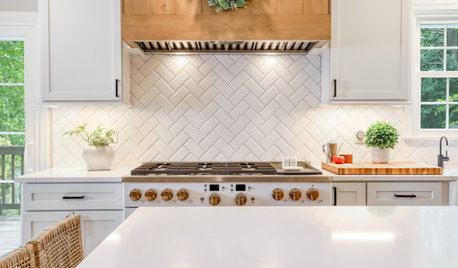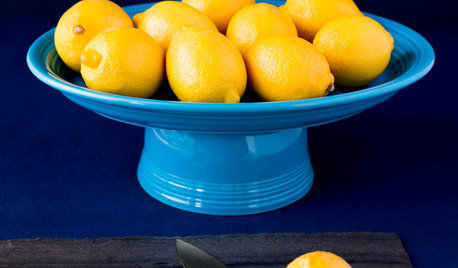Layer Cake Advice?
chas045
6 years ago
Featured Answer
Comments (16)
plllog
6 years agoRelated Discussions
what about making this cake in layers?
Comments (3)ngraham or anyone else who has made it, does it need the extra flavor from the Grand Marnier? Some reviewers said the mandarins weren't enough to give it much flavor, so they added orange extract, and others added grand marnier and orange zest. If it's fine without any additional flavor, I'd do it by the recipe....See MoreAdding jam or fruit filling between cake layers
Comments (10)If you're just making a 2-layer, filled cake: 1) bottom cake layer 2) THIN layer of icing (kind of a crumb-coat, just to seal the cake) 3) filling 4) second cake layer 5) ice sides/top as desired Preserves/fillings are a personal thing - I love a tart citrus filling made with fresh citrus (sorry, I think the canned lemon filling is pretty bad, although Solo raspberry is OK - again, just my own opinion) Don't worry about the cake not being sweet enough with a not-so-sweet-filling . . . between the cake and the frosting, believe me, it'll be sweet enough. If you go with a soft filling, make sure not to use too much or it will squish out the edges once you put the top layer on - that's where the 'dam' helps....See MoreLOOKING for: 4 layer cake, help with frosting and filling !!!!
Comments (1)When you mix meringues with whipped cream they will turn into blobs of tough goo. Hope the rest of the cake turned out well....See MoreAloha Layer Cake
Comments (19)Bev, I drizzle fine lines of Elmer's School Glue (not the regular Elmer's Glue) about 4 inches apart between the layers. First I tape the backing to the floor with painter's tape. Then I drizzle the glue and place the batting on the backing, smoothing it out well. Then more glue, and then the top smoothed over the batting. I let it dry for a few hours, and then it's ready to quilt. The layers stay together perfectly; I've never gotten a wrinkle. And no matter how much I handle the sandwich, it stays together. Then I wash the quilt when it's bound, and the glue vanishes. I think it's the greatest method. No overspray, no pins, no machine basting. The machine never hesitates when it hits the glue....See Morechas045
6 years agoci_lantro
6 years agolindac92
6 years agoplllog
6 years agolindac92
6 years agoci_lantro
6 years agoplllog
6 years agolast modified: 6 years agolindac92
6 years agomrspete
6 years agolast modified: 6 years agoannie1992
6 years ago
Related Stories

KITCHEN DESIGNThe 5 Layers of a Well-Lit Kitchen
Develop a layered lighting plan to create a functional, adaptable and illuminated kitchen
Full Story
KITCHEN DESIGNSmart Investments in Kitchen Cabinetry — a Realtor's Advice
Get expert info on what cabinet features are worth the money, for both you and potential buyers of your home
Full Story
DECORATING GUIDESDecorating Secrets: How to Layer Patterns Right
Here's How to Get That Perfect Mix of Color, Shape, Texture and Scale
Full Story
THE ART OF ARCHITECTURESound Advice for Designing a Home Music Studio
How to unleash your inner guitar hero without antagonizing the neighbors
Full Story
TASTEMAKERSBook to Know: Design Advice in Greg Natale’s ‘The Tailored Interior’
The interior designer shares the 9 steps he uses to create cohesive, pleasing rooms
Full Story
LATEST NEWS FOR PROFESSIONALS‘On Style’ Offers Inspiration and Advice From Interior Designers
Peek into the approaches and design philosophies of five of the country’s top interior designers profiled in a new book
Full Story0

MOST POPULARThe Easiest, Most Versatile Cake Stand You'll Ever Make
Show off sweet somethings and your own impressive handiwork — just don't let on how little effort it took
Full Story
DECORATING GUIDES10 Design Tips Learned From the Worst Advice Ever
If these Houzzers’ tales don’t bolster the courage of your design convictions, nothing will
Full Story
EARTH DAYAdd Layers to Garden Beds for Beauty and Sustainability
You can renew nature at home by filling in gaps with native plants and extending the bloom season
Full Story
GARDENING GUIDESLayer on the Textures for a Lush Garden Look
If your landscape feels flat, consider creating depth and interest with the color, shape and feel of your plants
Full Story


H B